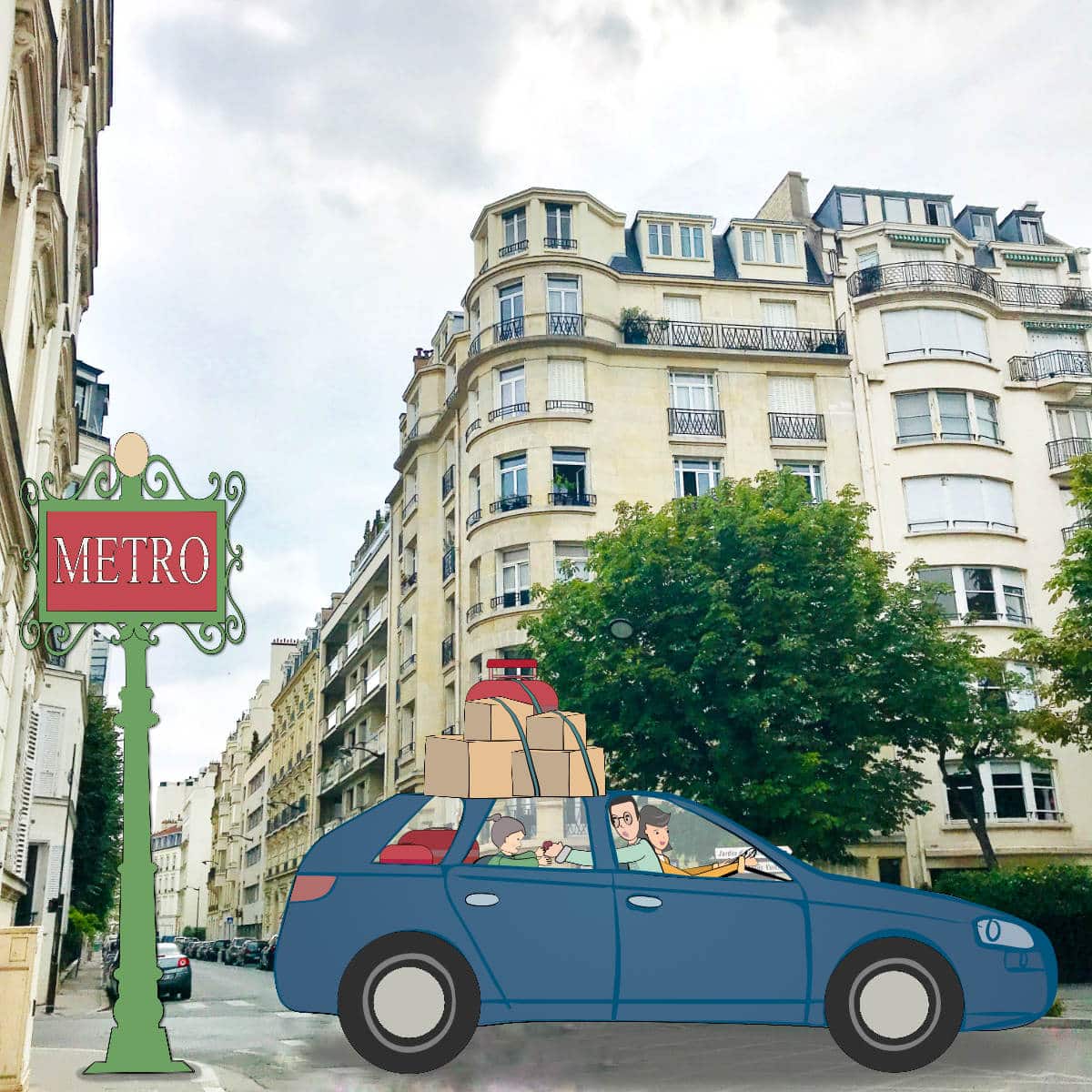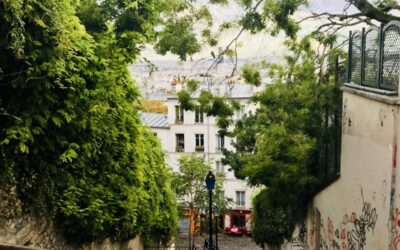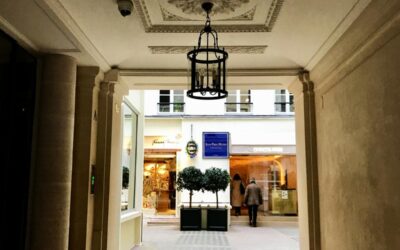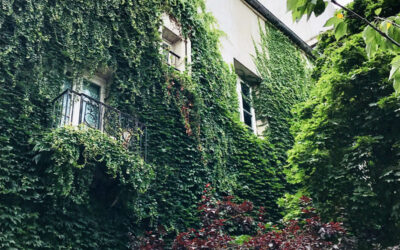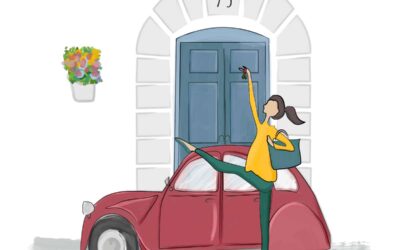There comes a point in every Parisian’s life when he or she starts to wonder: Should they maybe move out of Paris, and into the suburbs?
Move out of Paris, you say! Why? The charm, the culture, the museums! If you’ve not read the article on the Good, the Bad and the Ugly side of Paris, you can head over there now. But I can just summarize for you: the noise, the pollution, the tourists!
Alright, it is not the tourists, as much it is the lack of space. Paris is very pricey, and 1 million euros will barely get you 900 square feet in most parts of the city.
Trade that in for a 4-bedroom house your little French family, with a basement and a backyard. Not to mention the fresh air. And forget about the hassle of trying to rent in Paris!
So how do you pick? Well it depends very much on your lifestyle and what you prefer to prioritize. So let’s get to all the things we locals like to look at, shall we? Allons-y!
- Comparing Life in the Suburbs
- Best arrondissements in Paris for families
- Paris 1er – 75001
- Paris 2eme – 75002
- Paris 3eme – 75003
- Paris 4eme – 75004
- Paris 5eme – 75005
- Paris 6eme – 75006
- Paris 7eme – 75007
- Paris 8eme – 75008
- Paris 9eme – 75009
- Paris 10eme – 75010
- Paris 11eme – 75011
- Paris 12eme – 75012
- Paris 13eme – 75013
- Paris 14eme – 75014
- Paris 15eme – 75015
- Paris 16eme – 75016
- Paris 17eme – 75017
- Paris 18eme – 75018
- Paris 19eme – 75019
- Paris 20eme – 75020
- Moving outside of the city
Comparing Life in the Suburbs
If you are planning a move to France, you should know that there are no houses in Paris (or if there are, they cost over €20 million). If you need space, you need to look outside the Péripherique.
If you are wondering what that is, it is basically a giant highway that surrounds the Paris Métropole, cutting it off from its suburbs. There are public transit lines that cross the Periph’ and some parts are underground, so it is not as dreadful as it sounds. But there is still this physical barrier that is not the most aesthetically pleasing.
There are only 2 million inhabitants of Paris, compared to 10 million, in what became known in 2016 as Grand Paris in the region of Île-de-France.
Grand Paris is made up of the city Paris, as well as the suburbs of Hauts-de-Seine, Seine-Saint-Denis and Val-de-Marne). As you can imagine, the cost of living in Paris will be higher than in the suburbs.
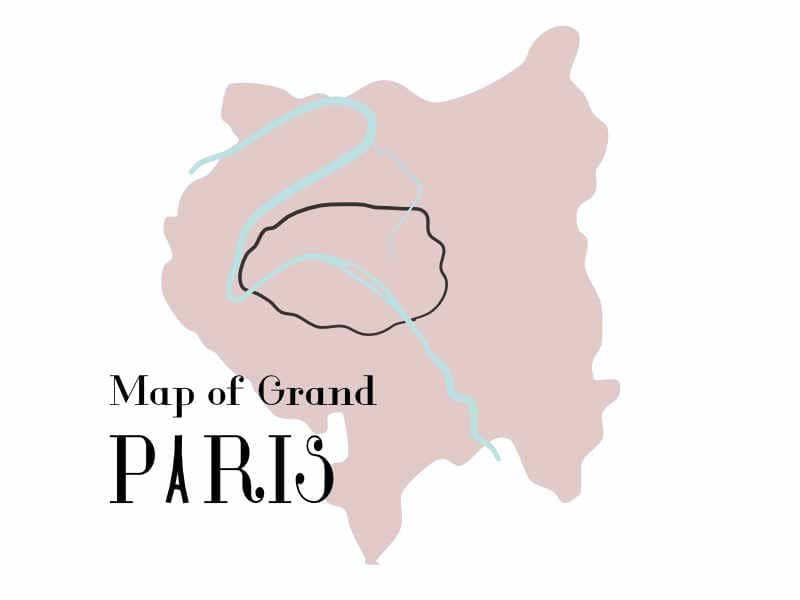
Now for any good comparison, you need a benchmark and some facts. Not to mention some qualitative factors and first-hand accounts from the locals. Paris itself is broken down into several areas and arrondissements, so we can base our criteria on the following:
- Transport links with Metro and RER access
- Greenery distinctions
- Public schools in the area
- Bilingual schools in the area (if that is a priority for your family)
☞ READ MORE: Best cities to live in France
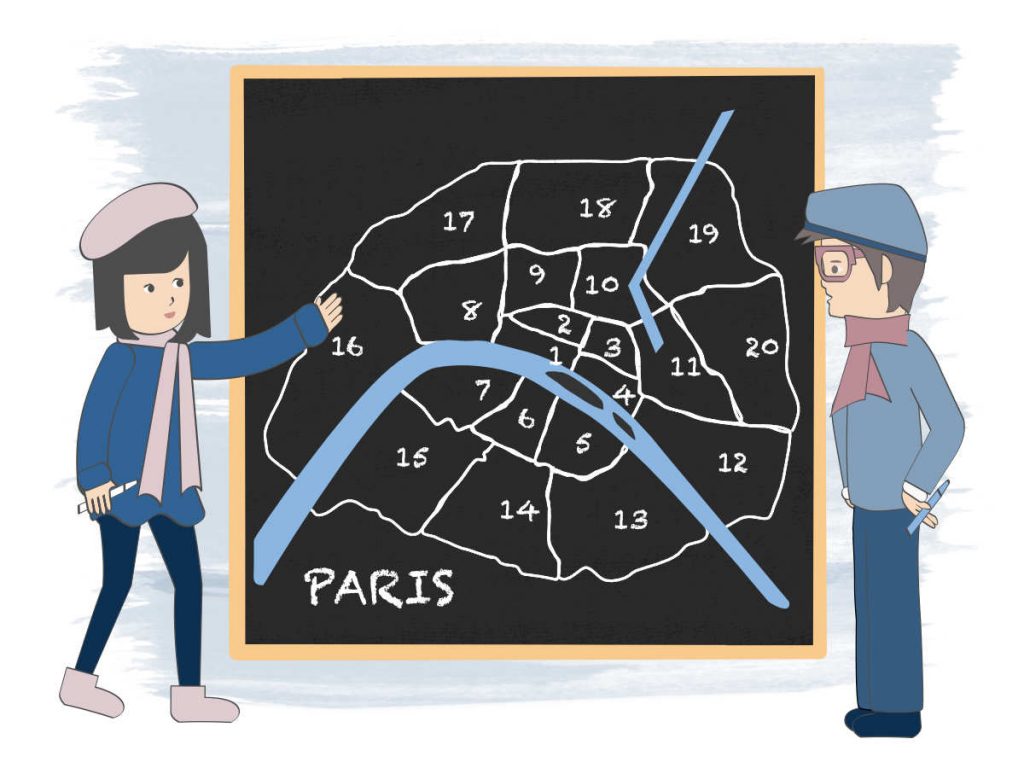
French Public Schools – What is the Brévet?
One of the main criteria for most families with children is schooling. And to judge schooling in an area, I’m using the benchmark that most French parents use, which is brévet scores.
The Brévet is the first general exam in the French schooling system, that is given to kids at the end of Collège (Middle school) around 14-15 years old.
French people tell me that it means absolutely nothing, you don’t “win” anything if you get your brévet, it is not really a diploma.
And it is not supposed to be a difficult exam. Indeed, many collèges have a 100% pass rate amongst their kids. This is why it is alarming to see certain collèges have a rate below the average, which was 88% as per Education.gouv.
At this point, I should add a big *asterick to the French Public school data presented below.
Word of Caution: The quality of the education received will vary from teacher to teacher, classroom to classroom, school to school, and as well as year to year. It is almost impossible to generalize and say this neighborhood is good for schooling, and this one is bad. And if you break it down into preschool (maternelle) versus high school (lycée), the variations in quality will be all over the place.
However, we do need some point of comparison. I focused on the Brevet scores that are at the end of Collège because it is a benchmark among some French parents as to whether that collège is good or not.
I know parents who put their kids in private Maternelle at 3 years old, on the theory that it is easier to get in as early as possible, rather than the year right before Collège.
So to have a comparison, I’ve calculated a “rough average” by arrondissement, to give an idea of what it is like. From there, each family needs to do their own “deep dive” into the area and the local schools, to judge for themselves.
☞ READ MORE: Demystifying the French Education System
The reason I’ve not chosen the High School Bac diploma results instead? The High school Bac success rate will depend on the stream taken (Science, Business, Languages, etc), where one school might be stronger in one field than another. But more than that, I think that as a parent, your 15-year-old will be able to hop on a public bus himself and go to a good high school, while you probably will not feel as comfortable letting your 10-year-old do the same. You will either have to commute with your young child, or put them in the closest school available.
Bilingual Schools
I’ve included bilingual schools on the list because if you are reading this article in English, you are probably interested in a bilingual education. The schools selected will, of course, vary by quality and price, and each parent will have to judge for themselves. (I have no particular knowledge of these schools, my kids are in public school!)
I’ve only included the schools that have at least a primary school and higher because it seems that every week a new private maternelle opens in Grand Paris, calling itself Bilingual and Montessori, and it seems a bit mind-boggling to me.
Best arrondissements in Paris for families
But overall, it is hard to pick a bad neighborhood within Paris, it just depends on what you are looking for. The charm and eclectic nature of the North of Paris, versus the proper bourgeois nature of Saint-Germain des Prés. Each arrondissement has its positives and negatives. Much of the decision will depend on where you are working and how long you are prepared for your commute to be.
Schooling is a big priority for any parent, so one thing of note here is that the average 2019 Middle school Brevet rate was 88%. (The French brevet was cancelled in 2020 due to health risks.) Based on that information, you can see there seems to be some sort of issue going with certain collèges in the 10th, 13th, 18th, 19th and 20th arrondissements. You will have to look into detail into the schools there.
On the other hand, if you are interested in bilingual schools, there are several in Paris (see below per arrondissement). The ones that are best known are Balzac in the 17th, Jeanine Manual and Camille Sée in the 15th, Montaigne in the 6th and EIB in the 8th. As I understand it, none of them are particularly easy to get into, so be prepared.
In terms of greenery, there are fewer large parks on the Right bank, (no the Cemetary of Montmartre does not count!) But keep in mind that Paris is quite small and walkable. Although there are no parks in the 18th, you can easily walk over to the Bassin de la Villette in the 19th, which is a beautiful open space, depending on where you are.
NOTES:
All information has been provided for entertainment purposes only, and we are not responsible for verifying the accuracy of the figures noted below. Caution: Use at own risk !
1. Brevet scores will vary from classroom to classroom and school to school, and year to year. Calulation is a “rough average” of Public school data, which is subject to interpretation and changes over time.
2. Population Data is from Insee Public Statistics and is subject to change.
3. Metro, RER and other public transport links are based on current state of public transportion (Oct 2019), and not future plans that under construction.
4. Greenery distinctions include “Fleurie” designation by the “Site officiel du Label Villes et Villages Fleuris” and is subject to personal interpretation.
Paris 1er – 75001
The center of Paris! Here in the 1st arrondissement, you will find the mother of all Metro stations: Chatelet Les Halles. It is one of the largest metro stations in the world and probably one of the ugliest as well.
The main connecting point for most of the public transit in Paris. So if accessibility is important to you, this is where you want to stay in Paris.
- Population (rounded): 8300
- RER: A
- Greenery distinctions: Jardin des Tuileries
- French Public School – Brevet Avg: 95 %
- Bilingual Schools (Primary & higher): None
- Notable Landmarks: Louvre Museum, Pont Neuf bridge, Conciergerie prison where Marie-Antoinette spent her last days, Chatelet Metro RER Station.
- Comments from locals: Lots of tourists and street noise. One woman that she loves her arrondissement, but worries about the lack of green space for her child: “4th floor walk up. Pollution. Lack of bedroom her child, as they are in a studio. It’s a difficult decision between more transport and isolation and less space but everything at doorstep.
Paris 2eme – 75002
One of the smallest of the arrondissements in Paris, the 2eme arrondissement used to be organized around the ancien Palais de la Bourse, or Palace of the Stock Market.
- Population (rounded): 20000
- French Public School – Brevet Avg: 89 %
- Bilingual Schools (Primary & higher): Lab School of Paris (Private)
- Notable Landmarks: Rue Etienne Marcel and Rue Montorgueil, two lovely and lively streets at the heart of Paris.
- Comments from locals: Two people commented that there were too many tourists.
Paris 3eme – 75003
This Paris arrondissement is the heart of the Marais. With the bustling Rue de Rivoli and pedestrian shopping zones, this is the perfect area to while away an afternoon. The 3rd arrondissement has a ton of bars and restaurants, as well as a lively gay scene.
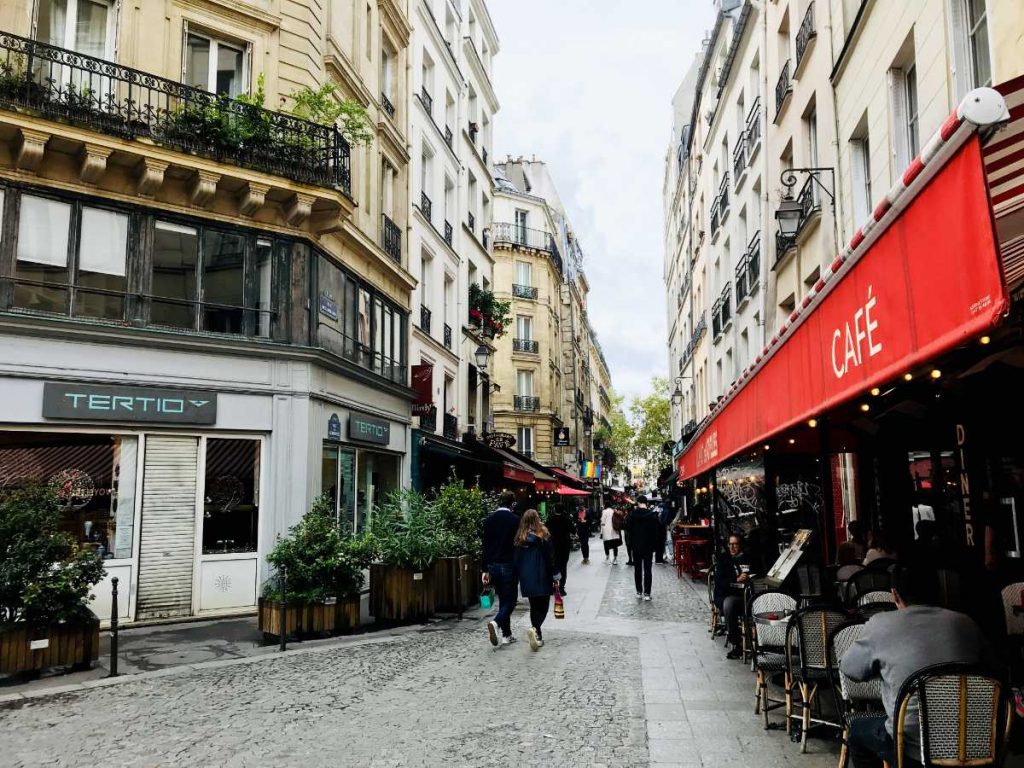
Note, if you are looking for a quiet apartment with not much street noise, the Marais is not the place to be. If you enjoy having a bit of nightlife around, however, the Marais is where you should stay in Paris.
- Population (rounded): 34000
- French Public School – Brevet Avg: 94 %
- Bilingual Schools (Primary & higher): Ecole Massillon (Private)
- Notable Landmarks: The Heart of the Marais. Also beautiful squares such as Place des Vosges and Place de la Republique.
Paris 4eme – 75004
The 4th arrondissement includes a portion of the Marais, and also includes the two islands in the middle of Paris.
Ile de la Cité and its neighboring Île St Louis are charming quiet neighborhoods where understated shops and restaurants flourish.
- Population (rounded): 27000
- RER: B
- French Public School – Brevet Avg: 93 %
- Bilingual Schools (Primary & higher): None
- Notable Landmarks: Notre Dame Cathedral on Ile de la Cité, Paris’s Hotel de Ville (townhall), and Centre Pompidou Modern Art museum.
- Comments from locals: Extremely happy to be so close to the canal and in the center of the city.
Paris 5eme – 75005
The 5th arrondissement is nicknamed the Latin Quarter for the university La Sorbonne that used to teach in Latin. This is the one of the oldest parts of Paris, and one of the most sought after.
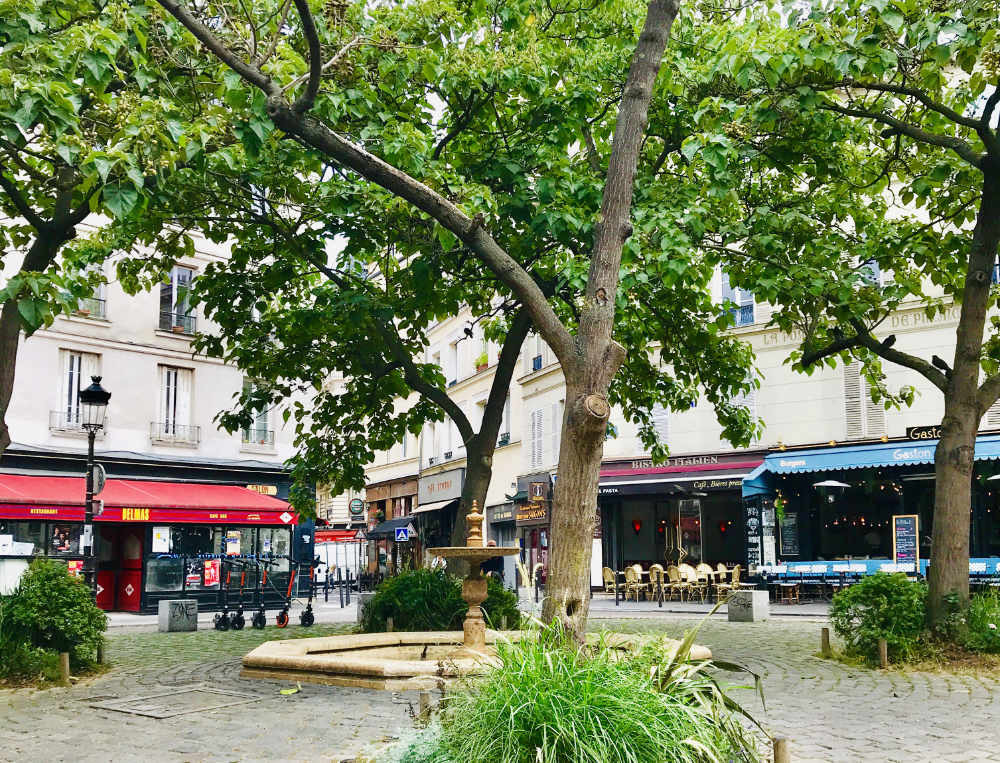
Today, it is still a student area, with many student bars and restaurants. Don’t be fooled though, the area is quite familial with many bourgeois Parisians also making their home here.
- Population (rounded): 59000
- RER: B
- Greenery distinctions: Jardin des Plantes
- French Public School – Brevet Avg: 96 %
- Bilingual Schools (Primary & higher): Collège Sévigné Secondary School (Private)
- Notable Landmarks: Heart of the Latin Quarter and La Sorbonne. The lively Rue Mouffetard and Place Contrescape.
- Comments from locals: One woman commented that they were very happy with where they lived, but didn’t care for the trash on the street. Another commented that they found the bars/restos in the area not very interesting.
Paris 6eme – 75006
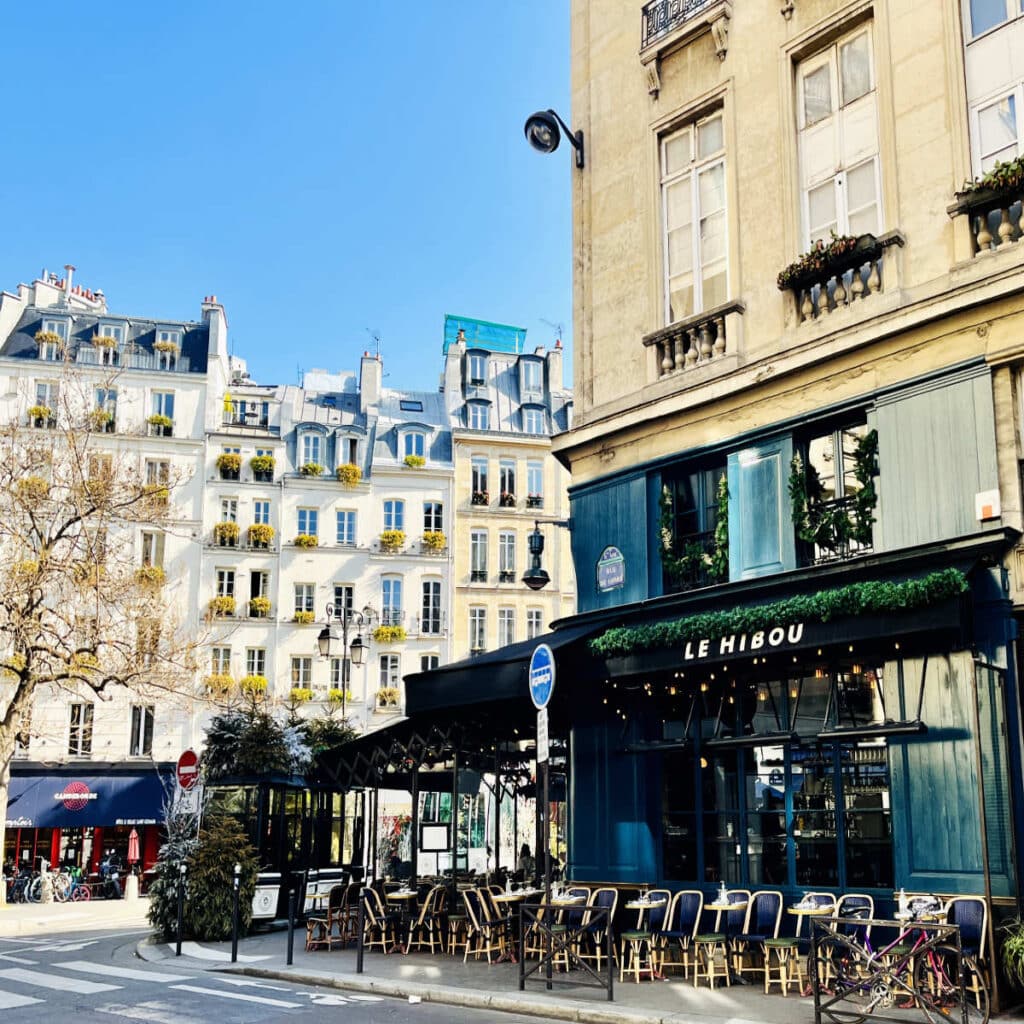
This is the very exclusive quartier de Odeon and the most expensive part of Paris. The famous café Les Deux Magots where Picasso and Hemingway were regulars, is also in the 6th arrondissement.
- Population (rounded): 40000
- RER: B
- Greenery distinctions: Jardin du Luxembourg
- French Public School – Brevet Avg: 90 %
- Bilingual Schools (Primary & higher): École Alsacienne (Private), Collège-Lycée Montaigne
- Notable Landmarks: The exclusive Saint-Germain-des-Prés neighborhood, one of the most fashionable and expensive addresses in Paris.
Paris 7eme – 75007
La grande dame, the Eiffel Tower lives here, with the glorious Champs de Mars park at its base. The 7th arrondissement is also home to the Musée d’Orsay, that “other” museum that gives the Louvre a good run for its money.
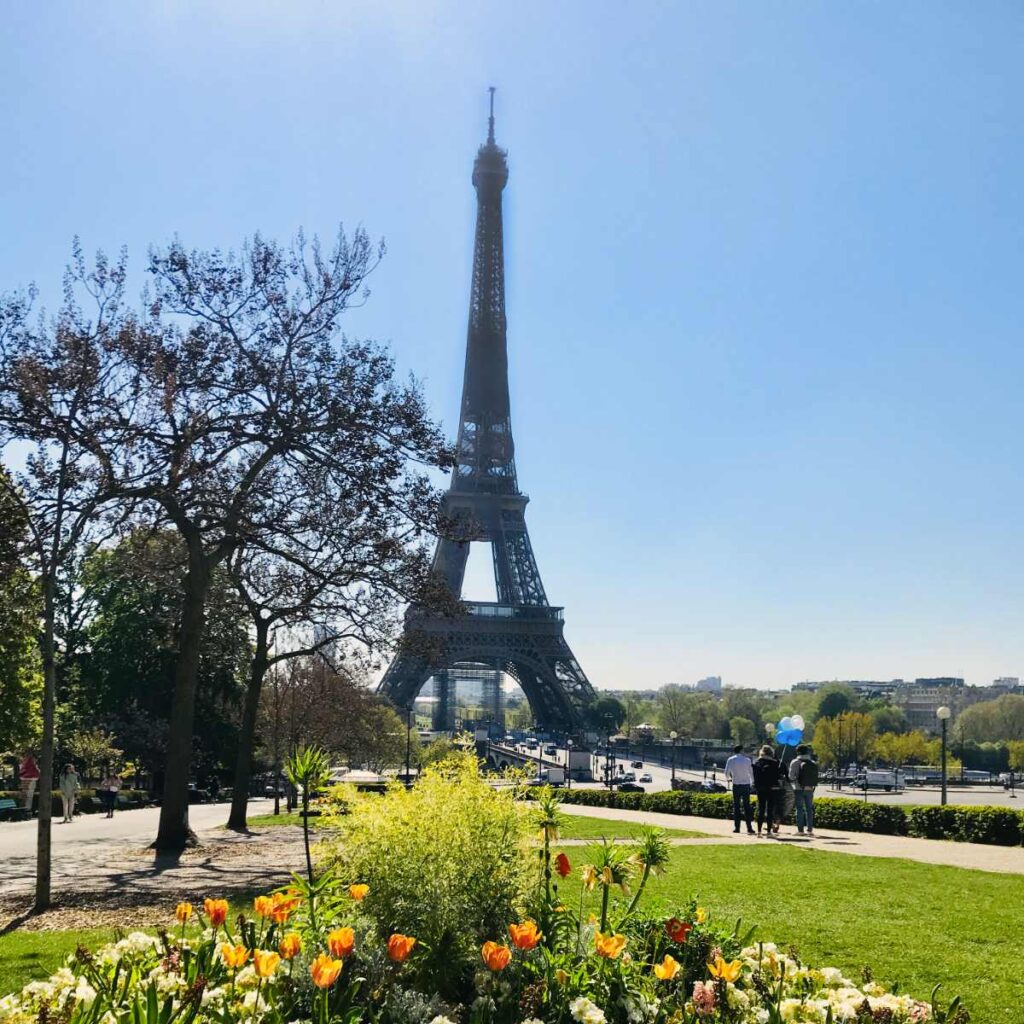
This is a quieter part of the city, with most of the arrondissement covered by large complex of Les Invalides buildings and the Champs de Mars. The French House of representatives, the Assemblée Nationale is also in this area.
- Population (rounded): 52000
- RER: C
- Greenery distinctions: Champs de Mars
- French Public School – Brevet Avg: 97 %
- Bilingual Schools (Primary & higher): Lennen Bilingual School (Private) , Cours Fides (Private), Ellipse Montessori Academy (Private)
- Notable Landmarks: Eiffel Tower, Musée D’Orsay, Bon Marché luxury department store, Les Invalides military complex where Napoleon Bonaparte is buried, Rue Cler market street.
- Comments from locals: Would like more small, green park space. Champ de Mars feels crowded and dusty. Les Invalides isn’t too family-friendly either except for picnics. Neighborhood feels safe and has great options for food shopping. It’s the best place for raising kids, family friendly, green, calm, safe. Dislikes: Too many tourists.
Paris 8eme – 75008
We are back in the 8th arrondissement, within walking distance to the Louvre Museum and the Rue de Rivoli. Place de la Concorde is where Marie-Antoinette, King Louis VI and other members of French nobility had their heads guillotined. These days it is a giant roundabout, with a fountain in the middle.
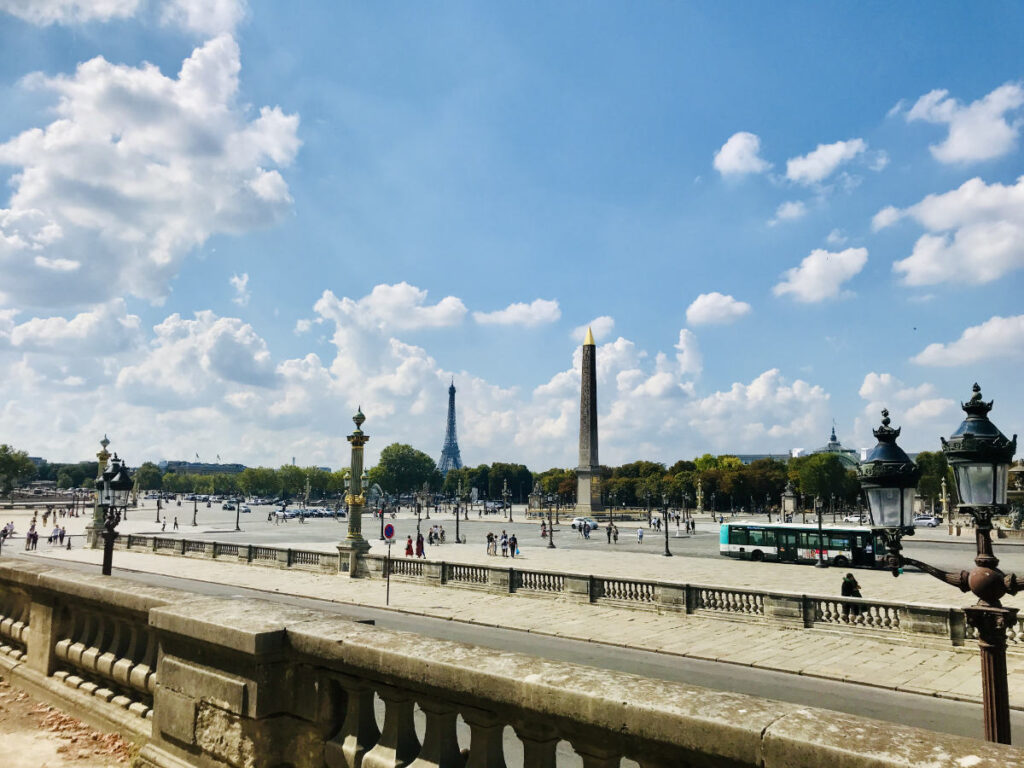
Connecting to the Concorde is that famous shopping street the Champs Elysées, which has seen the invading armies of Napoleon, German Reich, and today, busloads of tourists.
- Population (rounded): 36000
- RER: A
- Greenery distinctions: Parc Monceau
- French Public School – Brevet Avg: 97 %
- Bilingual Schools (Primary & higher): Hattemer (Private) , Eurecole (Private) – college , EIB Monceau (Private)
- Notable Landmarks: Place de la Concorde and the start of the Champs Elysées. Palais Elysées, the residence of the President of France, Grand Palais and Petit Palais exhibition place. Also the exclusive Avenue Montaigne shopping area.
- Comments from locals: A lot of tourists around the Champs Elysées
- Transilien: Y
Paris 9eme – 75009
The 9th is one of the best arrondissements for night-life. If you are looking for hip young bars, Grand Boulevard and So-pi (aka South Pigalle) are the places to be.
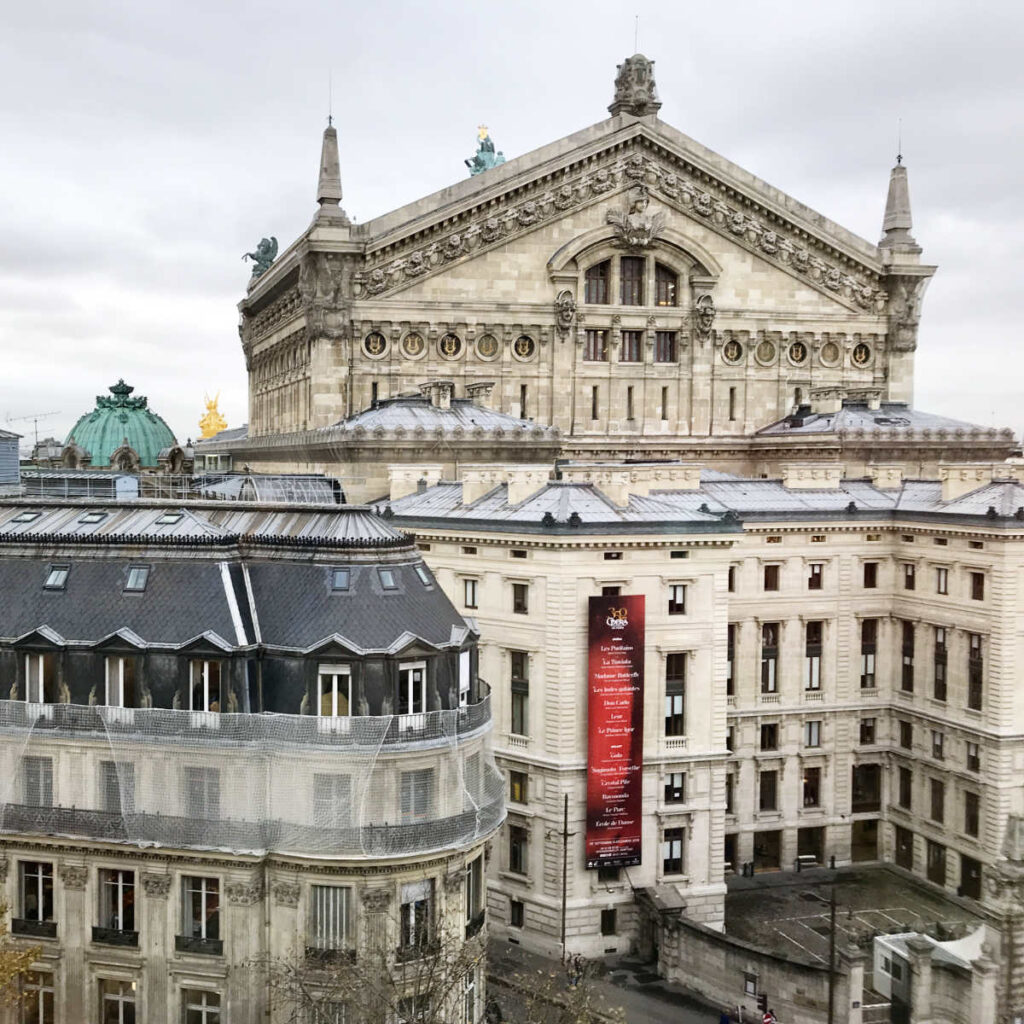
It is also near the Opera house Palais Garnier, Folie Bèrgere or any one of the tiny theatres. And if you need something to wear for all these wonderful outings, the Grand Magasins (department stores) Galarie Lafayette and Printemps will have you properly equipped.
- Population (rounded): 59000
- RER: A, E
- French Public School – Brevet Avg: 93 %
- Bilingual Schools (Primary & higher): Wi School Elementary (Private)
- Notable Landmarks: Opera Garnier and the large department shops of Galerie Lafayette and Printemps. Also close to Gare Saint Lazare, a major metro, RER and Transillien public transport hub.
- Comments from locals: No parks
Paris 10eme – 75010
The 10th arrondissement near Canal Saint Martin is hipster central, the place where cool Parisians hang out for after-work drinks. With its iron footbridges, this 19th-century waterway is lined with trendy restaurants and bars.
Further north is the Gare du Nord and Gare de l’Est train stations, which I will confess are probably two metro stations that you do not want to loiter outside of.
- Population (rounded): 91000
- RER: B, E
- Greenery distinctions: Canal Saint Martin
- French Public School – Brevet Avg: 79 %
- Bilingual Schools (Primary & higher): La Canopée (Private)
- Notable Landmarks: Beautiful and lively Canal Saint-Martin. Gare du Nord (Eurostar trains to the UK) and Gare de l’Est (high-speed trains to Alsace and Germany) stations.
- Comments from locals: Two families commented that it was too busy and dirty
- Transilien: Y
Paris 11eme – 75011
The epi-center of the French Revolution, Place de la Bastille is where the ancient prison was located before it was destroyed. Looking at the busy roundabout these days, you would never know it was there.
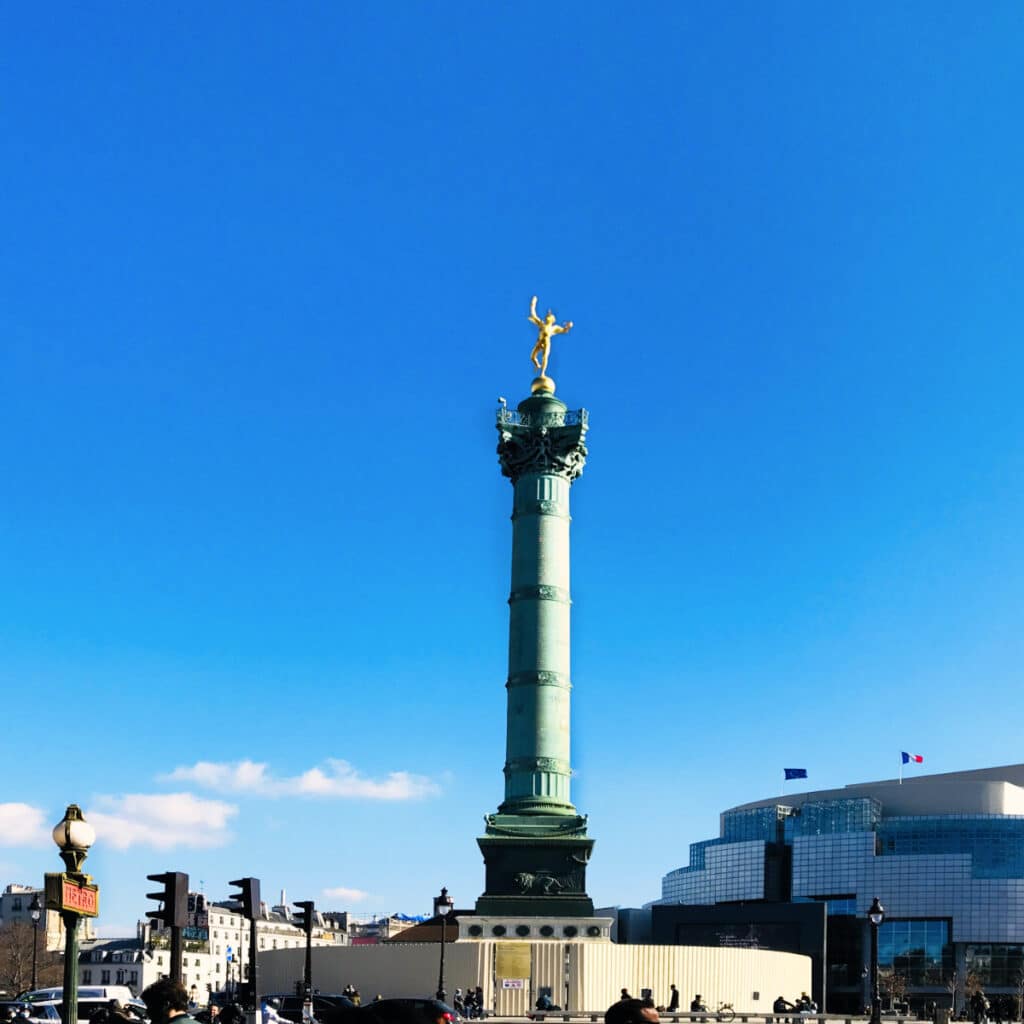
An area that has turned rather bourgeois, the 11th arrondissement is a popular neighborhood to live in because of its access to Gare de Lyon, which has many connections. The Marché Bastille, one of the largest outdoor farmers’ markets in Paris is also around here.
- Population (rounded): 147000
- RER: A
- Greenery distinctions: Canal Saint Martin
- French Public School – Brevet Avg: 91 %
- Bilingual Schools (Primary & higher): None
- Notable Landmarks: Place de la Bastille, the heart of the French Revolution. Rue de Lappe and Quartier Obercampf are two very lively neighborhoods for restaurants and bars.
- Comments from locals: The parks are too small. Would prefer to have a park the size of Butte Chaumont park within easy walking distance. Can be very quiet on Sundays. Lively bars and clubs on friday and saturday nights.
Paris 12eme – 75012
The 12th arrondissement is one of the more residential neighborhoods of Paris, but there are still plenty of shops and restaurants around.
It is also near outdoor mall Bercy Village, which is a lovely outdoor mall that was implanted into restored white stone warehouses.
- Population (rounded): 141000
- RER: A
- Greenery distinctions: Bois de Vincennes, Coulée Vert
- French Public School – Brevet Avg: 83 %
- Bilingual Schools (Primary & higher): Cours Moliere (Private)
- Notable Landmarks: Familial area of Coulée Vert (a 5km long elevated park on top of a train track) and outdoor mall Bercy Village. Large transport hub of Gare de Lyon, which houses high-speed TGV trains going to the South of France.
- Comments from locals: No pubs / bars with music
- Transilien: Y
- Tramway: Y
Paris 13eme – 75013
During the 1970s, city planners decided that they needed to increase the amount of housing in Paris, and so authorized a bunch of ugly tall buildings in the 13th arrondissement (along with Montparnasse in the 15th.)
These buildings probably wouldn’t be remarkable in New York or Toronto, but amongst the gorgeous 18th-century buildings of Paris, they stand out like a sore thumb.
Nevertheless, the 13th is home to the very quaint Buttes aux Cailles neighborhood, which is a village onto itself.
- Population (rounded): 181000
- RER: C
- Greenery distinctions: Parc Kellermann & Parc de Choisy
- French Public School – Brevet Avg: 82 %
- Bilingual Schools (Primary & higher): None
- Notable Landmarks: Cute village of Buttes aux Cailles and Gobelins area. Also notable for tall (rather ugly) residential skyscrapers.
- Comments from locals: Love the neighborhood, almost nothing to complain about. One family commented that where they live there is no there is no metro nearby (closest is 16 min walk).
- Tramway: Y
Paris 14eme – 75014
One of the more residential neighborhoods of Paris, the 14th arrondissement is also an area known for the artists who used to hang around there.
The area became famous in the 1920s and 30s, les Années Folles (the Crazy Years), where Picasso, Zola, Manet and Hemmingway all used to gather and discuss the issues of the world.
- Population (rounded): 137000
- RER: B
- Greenery distinctions: Parc Montsouris
- French Public School – Brevet Avg: 91 %
- Bilingual Schools (Primary & higher): Collège Sévigné Primary School(Private), L’Ecole Aujourd’hui (Private)
- Notable Landmarks: Entrance to the Catacombs of Paris.
- Comments from locals: Tiny apartment and parks always packed. The lack of green space and pollution. Otherwise fantastic neighborhood. Another family commented that If they didn’t have kids they would find it a bit boring but it’s perfect for kids.
- Transilien: Y
- Tramway: Y
Paris 15eme – 75015
Montparnasse tower in the 15th arrondissement is the ugly building in the center of Paris that rivals the Tour Eiffel in height.
Surrounding it are office buildings and family-oriented neighborhoods. If the north of Paris is a bit grungy and unclean, the 15th is the opposite, with large boulevards and residential quiet streets.
- Population (rounded): 233000
- RER: C
- Greenery distinctions: Parc Georges-Brassens and Parc André Citroën
- French Public School – Brevet Avg: 91 %
- Bilingual Schools (Primary & higher): Ecole Jeannine Manuel (Private) , Collège Camille Sée, EIB – The Victor Hugo Schoo( Private), Bilingual International School of Paris (Private)
- Notable Landmarks: Many businesses in and around Montparnasse Tower. Mini Statue of Liberty given by the U.S. to France, located on the Pont de Grenelle bridge that crosses the Seine River
- Comments from locals: Could be more activities for the kids under 4 but efforts are made. Dull, conservative, no real sense of community, congested with cars, poor air quality and loud traffic (louder than central Paris), lacks the ‘Paris feel’. Despite disliking the 15th, they stayed because they made good friends, obtained a place in the public creche, and were leaving Paris after 3 years anyway. Too residential, not that centrally located.
- Transilien: Y
- Tramway: Y
Paris 16eme – 75016
Passy and the historically affluent 16th arrondissement is a practically a suburb, with its large apartments and quiet streets.
The arrondissement connects to a large forest on the west of Paris, known as the Bois de Boulogne, which has within in Jardin d’Acclimatation, and the Fondation Louis Vuitton.
- Population (rounded): 165000
- RER: A, C
- Greenery distinctions: Bois de Boulogne
- French Public School – Brevet Avg: 92 %
- Bilingual Schools (Primary & higher): International School of Paris (ISP) (Private) , Kingsworth Bilingual School | Primary And Secondary School (Private) , Canadian Bilingual School of Paris (Private) , EIB Lamartine (Private), Eurecole (Private) Primary school
- Notable Landmarks: Charming village of Passy, the Louis Vuitton Foundation and art museum which is in the large forest of Bois de Boulogne, Jardin d’Acclimatation, an amusement park for small children, the famous Piscine Molitor, a hotel and outdoor swimming pool complex, Roland Garros French Open Tennis Stadium
- Comments from locals: A familial neighborhood with larger apartments. One woman commented: Lots of expensive shops, we are missing shopping centres in the area. Not much happening here, very quiet area. Quiet but safe area to live with kids. Good connection to central Paris. Lots of expats.
Paris 17eme – 75017
One of the more eclectic districts in Paris, the 17th arrondissement starts at the Arc de Triomphe and continues to edge of the city till it reaches the Péripherique (a six-lane highway that surrounds Paris.)
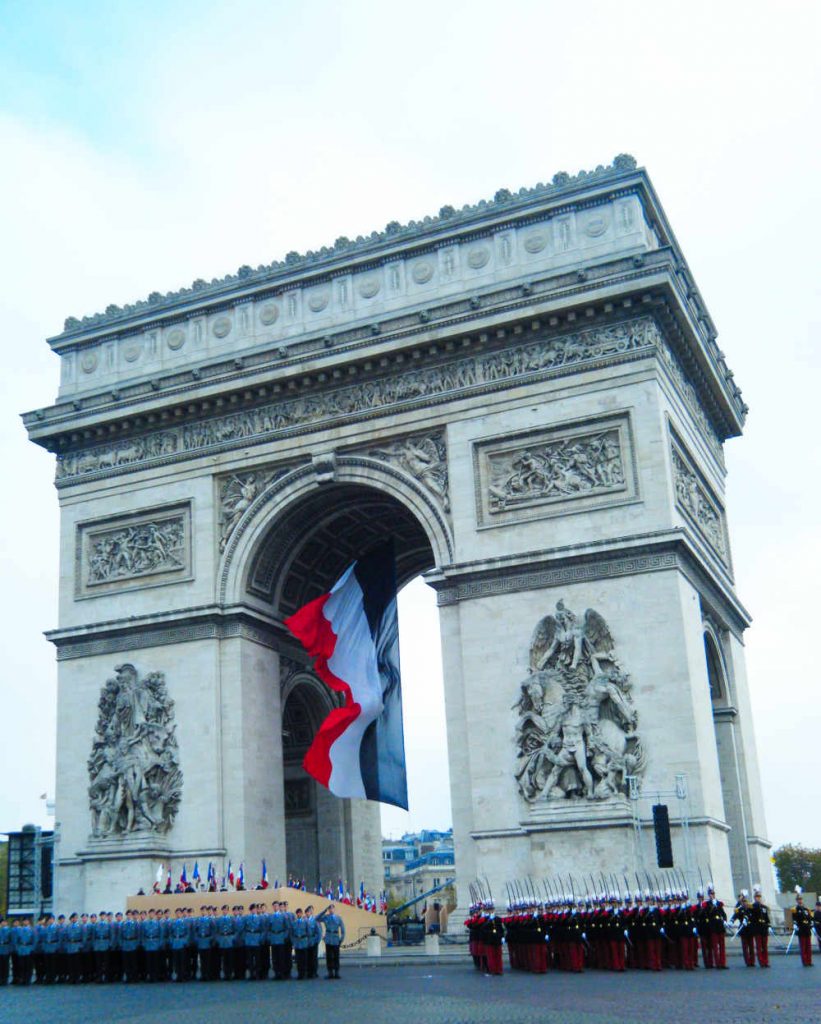
The infamous Metro line 13, in which passengers coming from outside the Periph’ are packed like sardines, also runs through the 17th. People who are looking to buy an apartment, usually run like the plague if their closest metro stop is on line 13.
North of the 17th is the quirky village of Batignolles, which was annexed into Paris by Napoleon III in 1860. It still maintains a village feel.
- Population (rounded): 167000
- RER: A, C
- Greenery distinctions: Parc Clichy-Batignolles
- French Public School – Brevet Avg: 91 %
- Bilingual Schools (Primary & higher): Lycée Collège International Honoré de Balzac , Collège Honoré de Balzac , Lycée EIB Etoile (Private) , Collège EIB Monceau (Private) La Petite Ecole Bilingue – Stewart International School (Private)
- Notable Landmarks: Connects to Arc de Triomphe and the Champs Elysées, bobo-chic quartier of Batignolles, Metro line 13 which is always very packed during rush hour, runs through this arrondissement.
- Transilien: Y
- Tramway: Y
Paris 18eme – 75018
Moulin Rouge, Pigalle and Sacré Coeur Basilica perched on a hill, welcome to the 18th arrondissement.
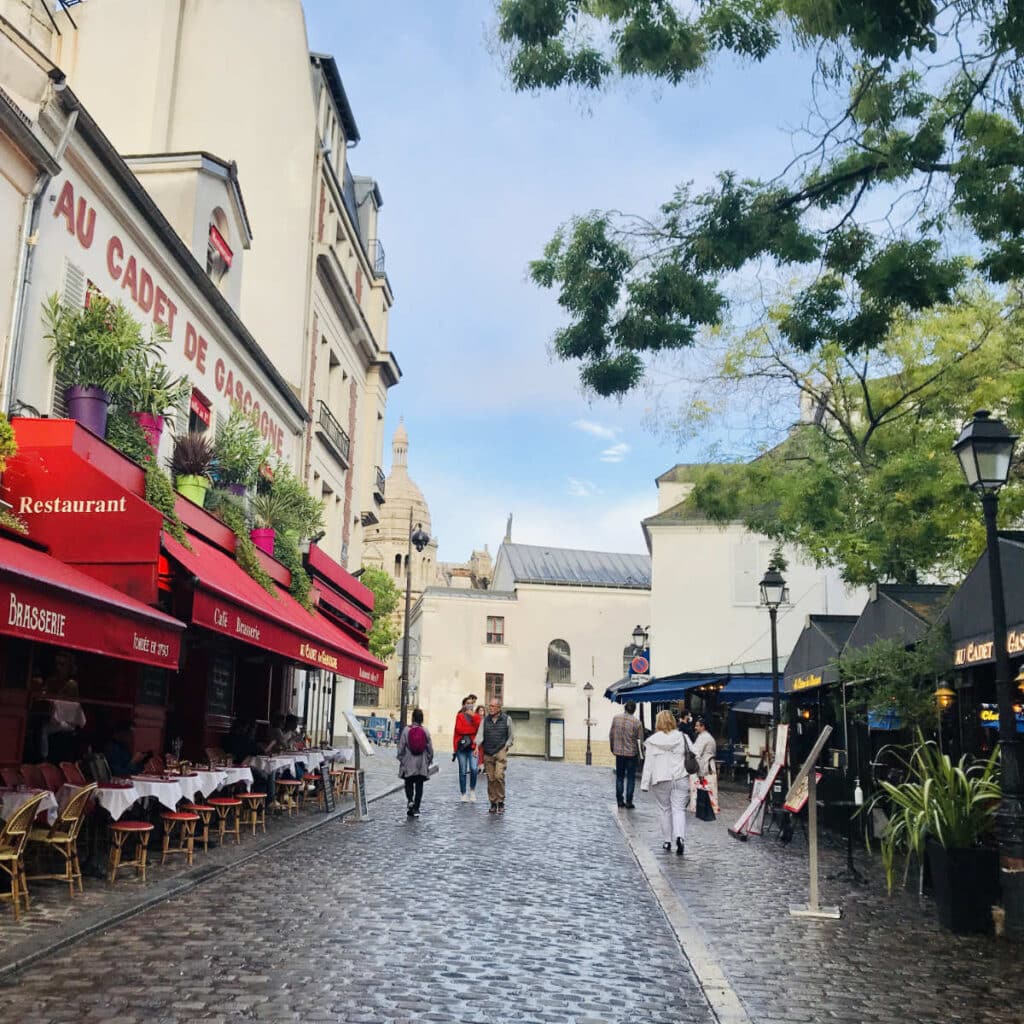
Walk past the cheesy souvenir shops, and head up the hill for a wonderful view of all of Paris. Montmartre is where the classic film Amélie Poulin was filmed and its iconic cobblestone streets will carry you past a ton of vintage and ethnic stores.
Note: This area is very hilly, so if you have trouble climbing and walking up stairs, you should not decide to live in this area.
- Population (rounded): 195000
- French Public School – Brevet Avg: 81 %
- Bilingual Schools (Primary & higher): None
- Notable Landmarks: The famous Montmartre. Moulin Rouge, Pigalle and Sacré Coeur Cathedral.
- Comments from locals: “Certain parts of Montmartre are quite hilly, Julie C notes that it is not always clean, and some areas a mere 10 minutes away can be sketchy at night. But she loves her neighborhood. Another woman commented that she wishes she could buy here but they can’t afford it so we will have to move eventually. A 3rd family commented that it is sometimes dirty.”
- Tramway: Y
Paris 19eme – 75019
One of the less expensive parts of Paris, the 19th arrondissement has nonetheless quite a few thing going for it.
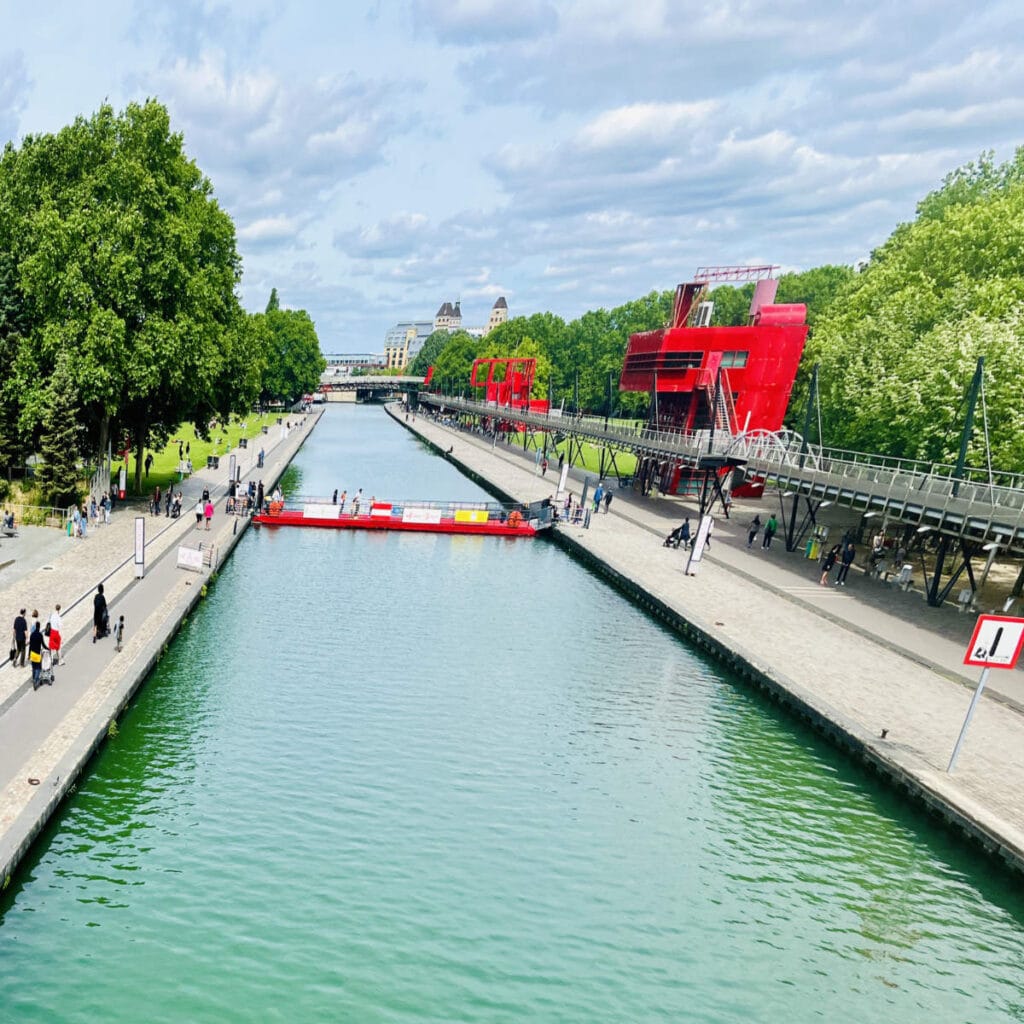
Parc de la Villette is a large flat park that surrounds the Canal d’Ourcq in the north of Paris, where there is always something going on. Concerts, picnics, festivals, and river cruises, this is where locals come to spend an afternoon.
Nearby is another large park, the Buttes Chaumont, which is a park with more trees and hills in it. It is also home to the classic bar the Rosa Bonheur, where cheap drinks and good times can be had by all.
- Population (rounded): 186000
- RER: E
- Greenery distinctions: Parc Buttes Chaumont and Parc de la Villette
- French Public School – Brevet Avg: 77 %
- Bilingual Schools (Primary & higher): Living School (Private)
- Notable Landmarks: Beautiful waterway of Canal d’Ourcq, Rosa Bonheur bar in Buttes Chaumont, Cité des Sciences in Parc de la Villette.
- Tramway: Y
- Local comments: Some of the parts of the 19th are not very nice at nighttime.
Paris 20eme – 75020
The equivalent of the residential 16th on the west side, the 20th arrondissement is also very popular with the locals while being relatively cheaper in terms of home prices.
The famous Père Lachaise cemetery is located here. While this is more of a family neighborhood, there are also some unexpectedly hip places around, such as the Belleviloise bar and the Mama Shelter restaurant and hotel.
- Population (rounded): 195000
- Greenery distinctions: Parc Belleville
- French Public School – Brevet Avg: 84 %
- Bilingual Schools (Primary & higher): Collège Maurice Ravel
- Notable Landmarks: Père Lachaise cemetery
- Comments from locals: “Would be happy to have more good restaurants and cafés . But there are great playgrounds and library nearby.
- Dislikes: Rubbish, noise.”
- Tramway: Y
Moving outside of the city
Now that we have our Paris as our point of reference, let’s look at the other suburbs around Paris, shall we?

☞ READ MORE: Household items you will own if you live in Paris
Well that was a lot of data! As I said before, this is just a starting point. From here each family has to do their own due diligence. Good luck and à bientôt!
